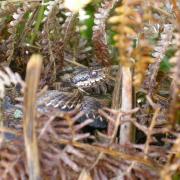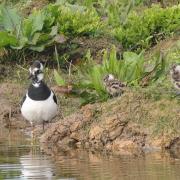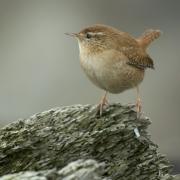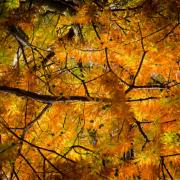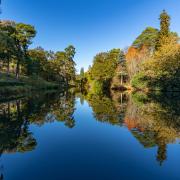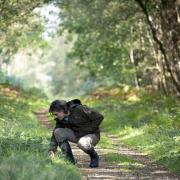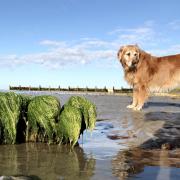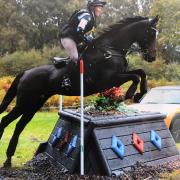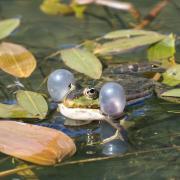Ecologist Matthew J Thomas embraces the unique plant communities found in Wealden wild flower meadows
The Sussex High Weald is a mysterious and alluring landscape. Winding lanes lead down into tunnels of green; sand-coloured rock faces emerge from wooded ghyll banks; an occasional, spectacular vista is revealed across rolling, wooded hills and glimpses of bluebell and yellow archangel appear in spring.
Stretching over more than 500 square miles, from Rye in the east to Horsham in the west, more than a quarter of the Sussex High Weald is covered by dense, dark woodland. From high vantage points, the irregular-shaped Wealden pastures appear to have been hewn out of the primeval forest.
The heavy, wet clay soils of the Weald inhibited the spread of agriculture well into the Middle Ages. When small farmsteads did appear, the fields were nibbled out of the woods to raise sheep and cattle, rather than to grow wheat. Maintained by a scythe of hay in early summer, followed by livestock grazing into late autumn, these permanent pastures were soon colonised by an assortment of light-hungry plants and insects which had otherwise persisted only in woodland clearings and on the margins of the old droveways.
The Wealden meadows developed specialist communities adapted to the peculiar conditions created by soil, aspect, slope and fertility. Plants such as Dyer’s greenweed, with its distinctive, bright butter-yellow flower spikelets; pinkish clumps of spiny rest-harrow; the ubiquitous oxeye daisy and the deep purple of green-winged orchid. The bizarre moundings of the yellow meadow ant were common, built to trap warming spring sunlight and the objects of foraging by hungry badger and green woodpecker. All of these species and many more have a natural lifecycle which fitted well, if entirely accidentally, with the customary farming of the hay meadows. This continued, largely unchanged from Medieval times until World War II.
The 1939 Agricultural Development Act (which subsidised the ploughing of established grasslands) started a period of rapid agricultural change. Financial incentives to increase productivity, together with the availability of cheap, inorganic fertilisers, promised a new era of prosperity for farmers. The vast majority (perhaps 97 per cent) of these flower-rich pastures were lost in the ensuing 50 years. Hay meadows were replaced by reseeded, homogenised fields, grazed short all the year round. Today these are invariably dominated by a narrow selection of fast growing, fertiliser-dependent grasses such as ryegrass and timothy.
Some ancient Wealden meadows persisted in forgotten corners, where old timers clung to the traditional ways, or where visionaries could see how times and priorities would change. One of these is the Coach Road Field on the Beech Estate. In June the field is filled with nodding oxeye daisy, sheep’s sorrel, rough hawkbit, yellow rattle, common spotted orchid, common knapweed and many more. Farm manager Keith Datchler protected it from agricultural improvement when the last generation of the Rudman family retired in their eighties. It was of no agricultural value 30 years ago, but now that small-scale dairy farming is unprofitable in the High Weald, the ancient meadow is again valued by the holidaymakers who stay in the former farmworkers’ cottages. Keith is an undoubted visionary who founded the High Weald Landscape Trust in 2004 and was awarded an OBE for services to conservation and to environmental land management in 2008.
Nature conservation legislation was strengthened in the 1980s and 1990s and agricultural subsidies also began to shift away from a singular focus on increasing production and more towards conservation. A tiny proportion of the ancient Wealden meadows were legally protected during this period, including Paines Cross Meadow. It has a remarkable mix of ‘Atlantic’ species which are normally confined to western Britain. These may well have survived from the original wildwood, sheltered in the secluded and humid microclimate of this Wealden hillside. Oxeye daisy may be missing, but sphagnum moss and cotton grass can still be found here.
In recent years there has been a move to create new Wealden wild flower meadows. Many Wealden farms are now owned by hobby farmers with cash to spare and a desire to enrich the natural landscape again. This change has coincided with the launch of national initiatives, such as Plantlife’s Coronation Meadows. This began in 2012 with the aim of raising awareness and creating new meadows using seed harvested from the ancient originals. Sussex has two Coronation Meadows: Coach Road Field and Valebridge Common Field, which is just north of Burgess Hill.
But recreating a habitat which has been almost lost is no mean feat. Decades of agricultural improvement usually alters the soil profile, substantially increases its fertility and changes the ‘bank’ of seeds which lie beneath the surface. Sowing wild flower seeds into this soil will invariably produce a disappointing crop of perennial sow-thistle and broad-leaved dock. Many of the commercially available
‘wild flower’ seed mixes are in fact a decidedly odd combination of unsuitable plants. The Flora Locale initiative has been a great help in highlighting legitimate suppliers of seed
for habitat recreation initiatives, such as the Weald Meadows Partnership which pays landowners to sustainably harvest seed from their ancient meadows.
In recent years, new pioneers in Wealden meadow creation have begun to emerge. Iain Parkinson, Conservation Manager at Wakehurst Place in Ardingly has been experimenting with seed and wild flower plant ‘plugs’ grown from the Millennium Seed Bank and has created an entirely new wildflower meadow in Bloomer’s Valley. Colin Reader runs Wild Flower Lawns and Meadows, based in Horam. Colin creates new meadows for private clients throughout the Weald as well as offering meadow creation advice internationally. Learnt through years of trial and error, his technique first eliminates the soil seed bank and excludes rabbits from the seeding area. While not a substitute for the original, ancient Wealden meadows, these new meadows are visually spectacular and of great nature conservation value. Thanks to these and other pioneers, the future of the Wealden wild flower meadows looks more promising than at any time in a generation.
Matthew Thomas is a photographer and ecologist who has been exploring the Sussex High Weald for over 25 years. See: www.mjt.photography
For more information
• coronationmeadows.org.uk (includes directions to visit the two Coronation Meadows in Sussex)
• www.kew.org/about/press-media/press-releases/magical-meadows-wakehurst
• www.wildflowerlawnsandmeadows.com
More wildlife…
• Amazing animal sightings in Sussex - With our long stretch of coastline as well as the South Downs (and everything in between), Sussex is a great place to spot a big range of wildlife. We’ve rounded up a few of the more unusual sightings...




